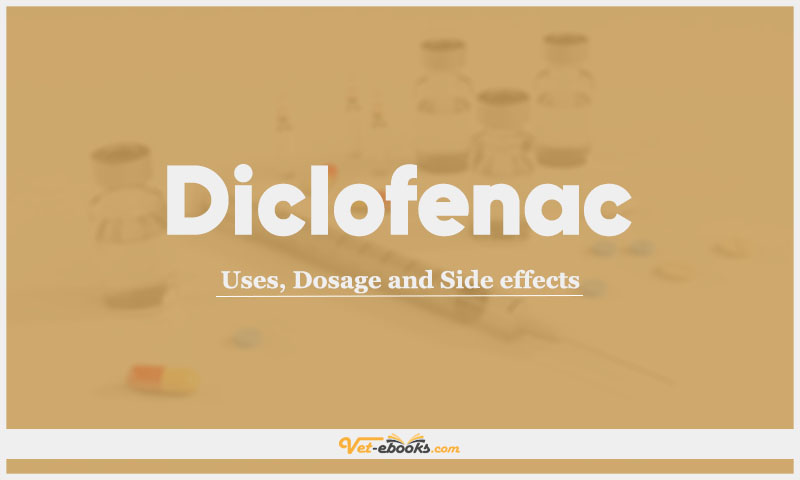Diclofenac: Uses, Dosage and Side Effects

Overview
- COX inhibitor that produces local anti-inflammatory effects.
Uses of Diclofenac
- Used in cataract surgery to prevent intraoperative miosis and reflex (axonal) miosis caused by ulcerative keratitis.
- Used to control pain and inflammation associated with corneal surgery and in ulcerative keratitis when topical corticosteroid use is contraindicated.
Dose of Diclofenac in Dogs and Cats
Dogs, Cats:
1 drop q30min for 2 hours prior to cataract surgery.
Drug Dosage Calculator
You Should Give:
Side Effects of Diclofenac in Dogs and Cats
- May cause local irritation.
- Topical NSAIDs should be cautiously used in ulcerative keratitis as they can delay epithelial healing.
- Topical NSAIDs, and most specifically diclofenac, have been associated with
an increased risk of corneal ‘melting’ (keratomalacia) in humans,
although this has not been reported in the veterinary literature. - Topical NSAIDs can potentially increase intraocular pressure and should be used with caution in dogs and cats with glaucoma.
- Regular monitoring is advised.
Contraindications of Diclofenac in Dogs and Cats
- No information available
Some Notes:
- Ophthalmic NSAIDs may be used safely with other ophthalmic pharmaceuticals, although concurrent use of drugs that adversely affect the corneal epithelium (e.g. gentamicin) may lead to increased corneal penetration of the NSAID.
- The concurrent use of topical NSAIDs with topical corticosteroids has been identified as a human risk factor for precipitating corneal problems.
Tip
Do You Want To Increase Your Veterinary Knowledge and Practical Skills?
You Can Now Browse and Download +3000 Books For Veterinary Professionals & Students Online.
Download Veterinary Books




















